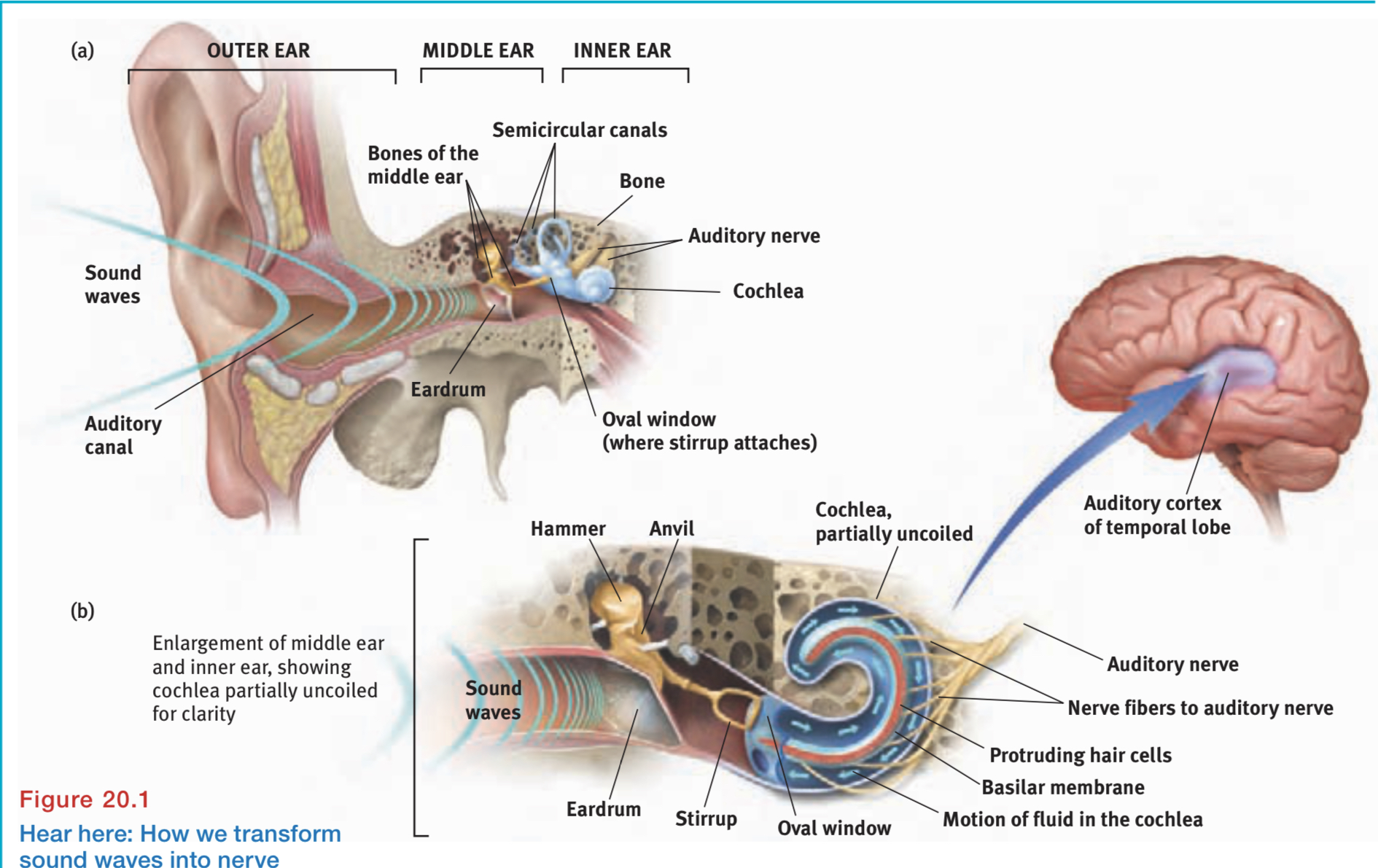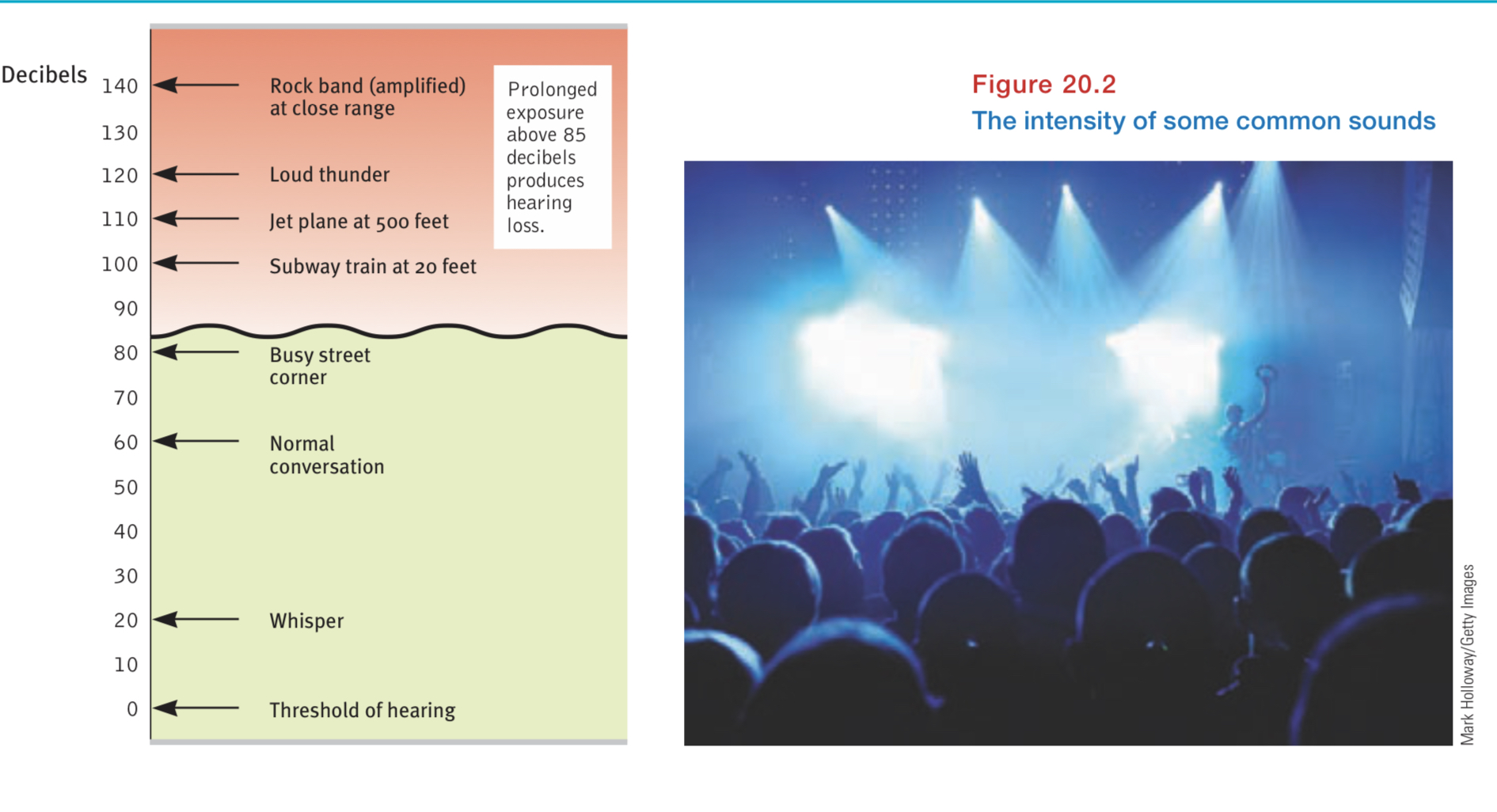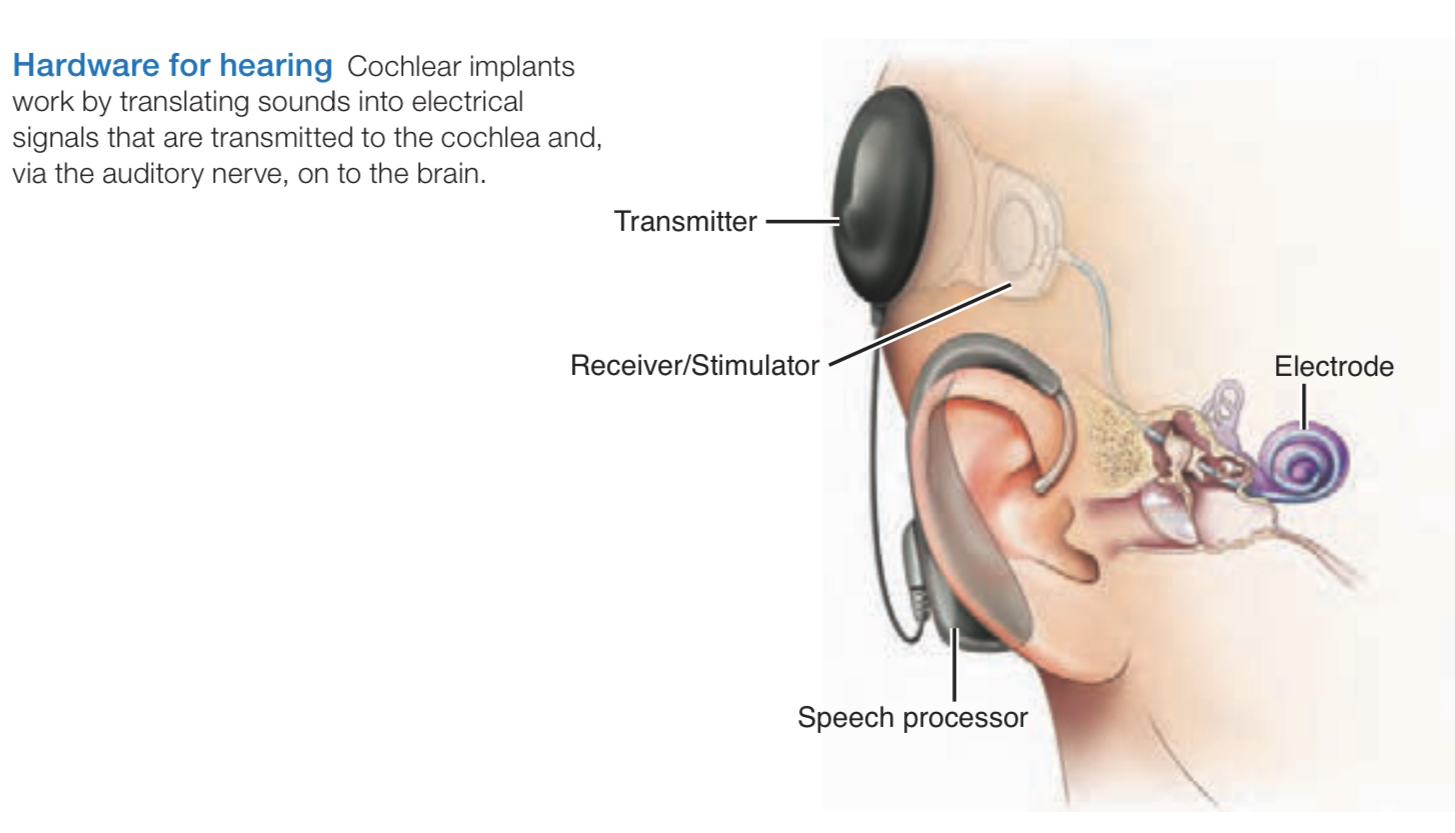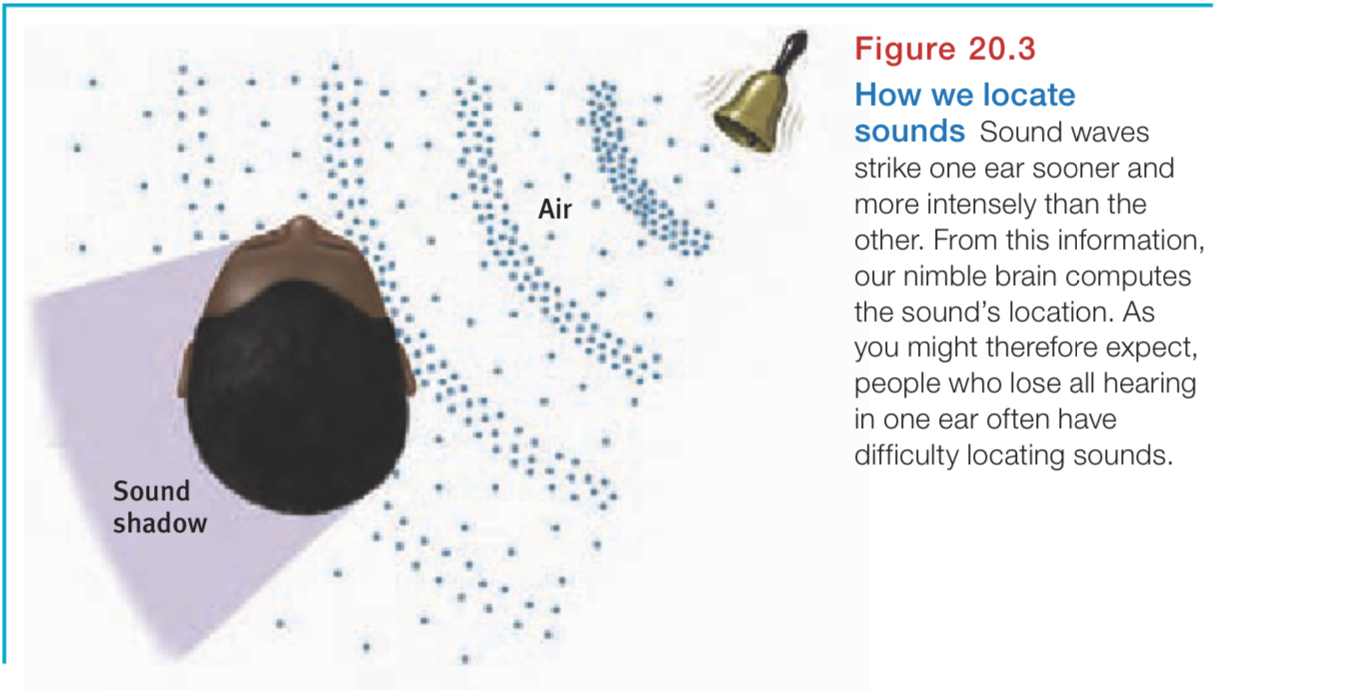Module 20:Hearing
20-1: What are the characteristics of air pressure waves that we hear as sound, and how does the ear transform sound energy into neural messages?
- ^^audition^^: the sense or act of hearing
- We hear a wide range of sounds, but the ones we hear best are those sounds with frequencies in a range corresponding to the human voice
The Stimulus Input: Sound Waves
- Sound waves are bands of compressed and expanded air. Our ears detect these changes in air pressure and transform them into neural impulses, which the brain decodes as sound
- Sound waves vary in amplitude, which we perceive as differing loudness, an in frequency, which we experience as differing pitch
- ^^frequency^^: the number of complete wavelengths that pass a point in a given time
- ^^pitch^^: a tone’s experienced highness or lowness; depends on frequency
- Long waves have low frequency--and low pitch. Short waves have high frequency--and high pitch
- We measure sound in decibels, with zero decibels representing the absolute threshold for hearing. Every 10 decibels correspond to a tenfold increase in sound intensity.
The Ear
- Through a mechanical chain of events, sound waves traveling through the auditory canal cause tiny vibrations in the eardrum. The bones of the middle ear, the hammer, anvil, and stirrup, amplify the vibrations and relay them to the fluid-filled cochlea. Rippling of the basilar membrane, caused by pressure changes in the cochlear fluid, causes movement of the tiny hair cells, triggering neural messages to be sent, via thalamus, to the auditory cortex in the brain. (Figure 20.1)
- The outer ear is the visible portion of the ear.
- ^^middle ear^^: the chamber between the eardrum and cochlea containing three tiny bones (hammer, anvil, and stirrup) that concentrate the vibrations of the eardrum on the cochlea’s oval window
- ^^cochlea:^^ a coiled, bony, fluid-filled tube in the inner ear; sound waves traveling through the cochlear fluid trigger nerve impulses
- ^^inner ear:^^ the innermost part of the ear, containing the cochlea, semicircular canals, and vestibular sacs

- ^^sensorineural hearing loss:^^ hearing loss caused by damage to the cochlea’s hair receptor cells or to the auditory nerve; also called nerve deafness
- disease can cause sensorineural hearing loss, but usually the culprits are biological changes linked with heredity, aging, and prolonged exposer to ear-splitting noise or music

- ^^conduction hearing loss^^: hearing loss caused by damage to the mechanical system that conducts sound waves to the cochlea
- Cochlear implants can restore hearing for some people.
- ^^cochlear implants:^^ a device for converting sounds into electrical signals and stimulation the auditory nerve through electrodes threaded in to the cochlea

Perceiving Loudness
- A soft, pure tone activates only the few hair cells attuned to its frequency. Given louder sounds, neighboring hair cells also responds. Thus, the brain can interpret loudness from the number of activated hair cells.
- If a hair cell loses sensitivity to soft sounds, it may still respond to soft sounds. Really loud sounds may seem loud to people with or without normal hearing.
Perceiving Pitch
20-2: What theories help us understand pitch perception?
- Frequency theory explains how we hear low-pitches sounds.
- ^^frequency theory^^: in hearing, the theory that the rate of nerve impulses traveling up the auditory nerve matches the frequency of a tone, thus enabling us to sense its pitch
- Place theory explains how we hear high-pitched sounds
- ^^place theory:^^ proposes our brain interprets a particular pitch by decoding the place where a sound wave stimulates the cochlea’s basilar membrane.
- A combination of the two theories, the volley principle, explains how we hear pitches in the middle range
Locating Sounds
20-3: How do we locate sounds?
- The placement of our two ears allows us the enjoy stereophonic, three-dimensional, hearing
- Sound waves strike one ear sooner and more intensely than the other. The brain analyzes the minute differences in the sounds received by the two ears and computes the sound’s source.
